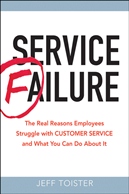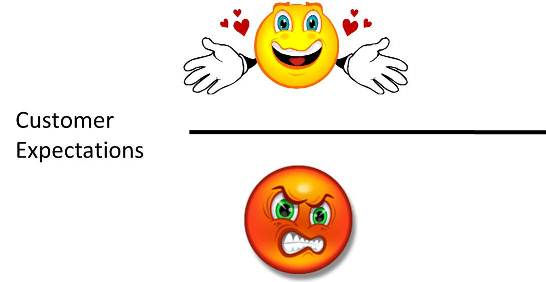2012 Call Center Demo & Conference Re-cap
 Jeff Toister
Jeff Toister  Sunday, October 14, 2012 at 12:04PM |
Sunday, October 14, 2012 at 12:04PM | I attended the 2012 Call Center Demo & Conference last week in Dallas, Texas. If you are like me, you find it hard to keep track of all the brilliant ideas, inspiring speakers, and helpful contacts you come across at a conference like this. And, it's sometimes just too difficult to choose between going to one session or another!
With this in mind, I put together a re-cap of some of the conference highlights.
Conference Overview
If you didn't attend, you may want to start by familiarizing yourself with the conference:
Day 1 Site Tours
Day 1 of the conference featured site tours to several call centers in the Dallas area. (See tour schedule.) This was a travel day for me, so I missed out, but participants were definitely abuzz about their experiences. The tour of the NOVO 1 call center generated a lot of conversation in particular:
- @chammarb: NOVO 1's customer doll, Laura Adams, reminds the team that the customer is always front & center. pic.twitter.com/Yu72CtNp
- @justinmrobbins: Having a "way cool" tour of the NOVO1 call center! pic.twitter.com/At8OooLo
- @PaulJRoberts: attended day one with site tour of Novo 1. Good learning event!
Day 2 Keynote: Ann Tardy
Ann Tardy opened Day 2 with an inspiring keynote, Rousing the Remarkable: The Secret To Unleashing Moxie in a Mediocre World. Ann's credentials:
- Author: LifeMoxie! Ambition on a Mission
- Founder & President: LifeMoxie Mentoring
There were plenty of quotes from Ann's presentation on Twitter:
- @MartaKelsey: "To influence your team members you must understand them and how they tick"
- @sstealey: "People love to make a difference! Leaders are key to influencing their success." Ann Tardy is giving us those keys!
- @bobfurniss: "Give people permission to fail. Fear of failure is a barrier to success but a powerful opportunity to learn."
- @hawgbald: "Reject "lookism"... making assumptions about people by their appearance."
- @chammarb: Ann Tardy tells us, "Declare a battle cry." What's YOUR battle cry?
Day 3 Keynote: Garrison Wynn
Garrison Wynn kicked off Day 3 with a humorous and energetic keynote, Mastering the Art of Influence. Garrison's credentials:
- Author: The Real Truth about Success: What the Top 1% Do Differently, Why They Won't Tell You, and How You Can Do It Anyway!
- Keynote Speaker: GarrisonWynn.com
Once again, Twitter made it easy to collect inspiring and helpful quotes from Garrison's presentation:
- @DanielDougherty: "Trust is built on 2 things: compassion and competence."
- @justinmrobbins: "The #1 thing that people value is feeling valued."
- @hawgbald: "The leading cause of stress is knowing exactly what you need to be doing and doing something else."
Day 3: The Journey to a Customer-focused Culture
I facilitated a session on day three that discussed ways to build a customer-focused culture in your call center. The participants were wonderfully involved and energized, making it a fun session for me. Here are some resources from the session in case you missed it:
- Presentation: The Journey to a Customer-focused Culture
- Handout: The Journey to a Customer-focused Culture
- Resource: Sign-up for free Customer Service Tip of the Week emails
- Bonus Video (same topic, but filmed at a different event):
More Learning
Going to a conference (or missing out on one) can sometimes generate a strong desire to keep learning about a particular topic. Here's another opportunity to gain more knowledge:
Webinar: Three Hidden Causes of Call Center Service Failures
Date & Time: Wednesday, November 7; 10am - 11am Pacific (1pm - 2pm Eastern)
Cost: Free thanks to our sponsor, Voiance Language Services
If you attended the conference, what was your biggest take-away?
 Jeff Toister is the author of Service Failure: The Real Reasons Employees Struggle with Customer Service and What You Can Do About It. The book is scheduled to be released on November 1.
Jeff Toister is the author of Service Failure: The Real Reasons Employees Struggle with Customer Service and What You Can Do About It. The book is scheduled to be released on November 1.
You can learn more about the book at www.servicefailurebook.com or pre-order a copy on Amazon, Barnes & Noble, or Powell's Books.







